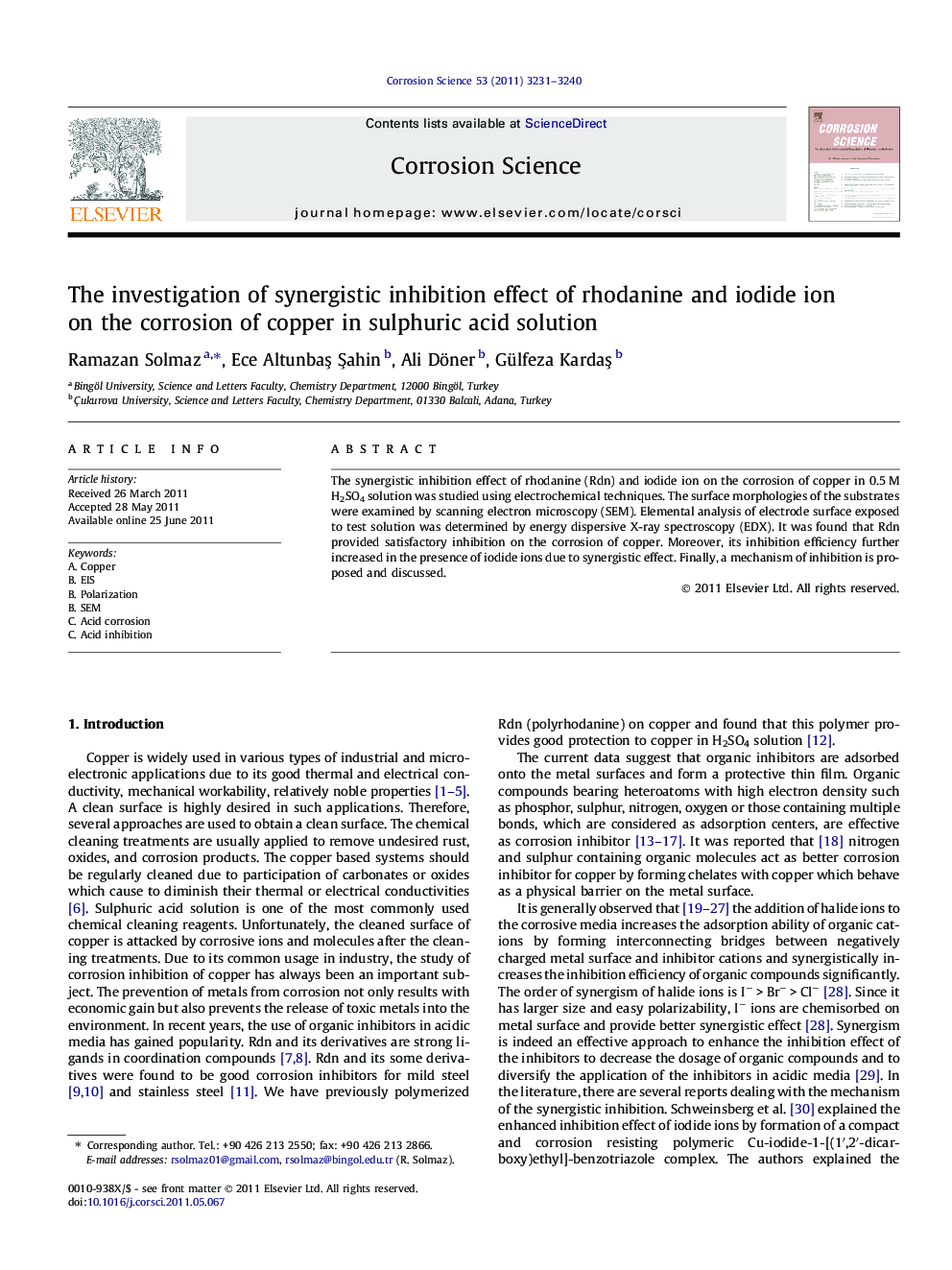| Article ID | Journal | Published Year | Pages | File Type |
|---|---|---|---|---|
| 1469720 | Corrosion Science | 2011 | 10 Pages |
The synergistic inhibition effect of rhodanine (Rdn) and iodide ion on the corrosion of copper in 0.5 M H2SO4 solution was studied using electrochemical techniques. The surface morphologies of the substrates were examined by scanning electron microscopy (SEM). Elemental analysis of electrode surface exposed to test solution was determined by energy dispersive X-ray spectroscopy (EDX). It was found that Rdn provided satisfactory inhibition on the corrosion of copper. Moreover, its inhibition efficiency further increased in the presence of iodide ions due to synergistic effect. Finally, a mechanism of inhibition is proposed and discussed.
Graphical abstractThe synergistic inhibition effect of rhodanine and iodide ion on the corrosion of copper in 0.5 M H2SO4 solution was studied using change of open circuit potential with exposure time, anodic and cathodic current–potential curves, linear polarization resistance, electrochemical impedance spectroscopy, SEM and EDX techniques.Figure optionsDownload full-size imageDownload as PowerPoint slideHighlights► Rhodanine inhibits corrosion of copper in 0.5 M H2SO4 solution. ► The inhibition efficiency of rhodanine is concentration dependent. ► The addition of KI to the rhodanine containing solution could further increase inhibition efficiency. ► The enhanced inhibition in the presence of KI is due to synergistic effect between I− ions and inhibitor molecules. ► The high inhibition efficiency is explained by adsorption and a protective film formation.
